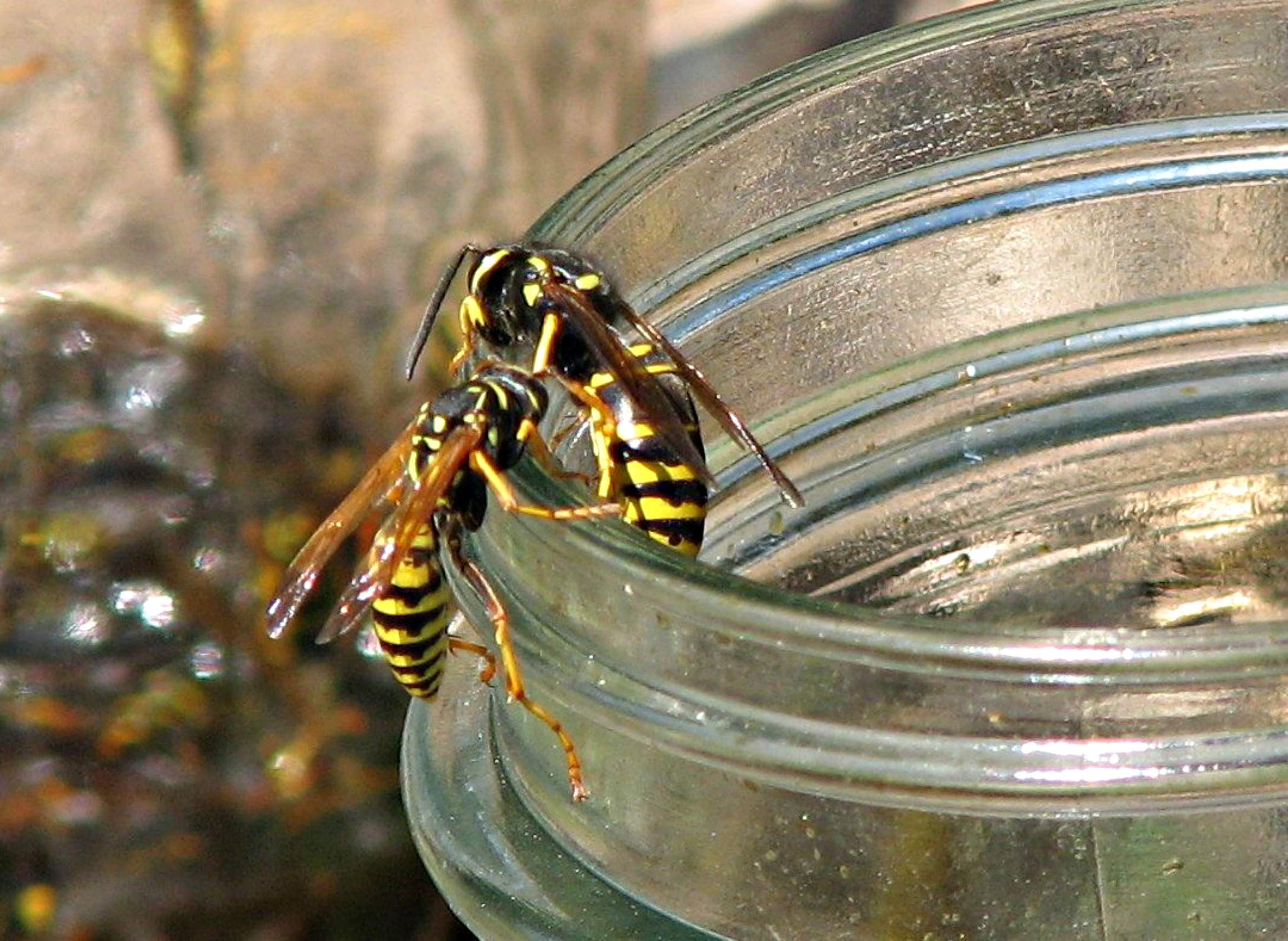
Yellow jackets are one type of wasp species commonly found around Wisconsin.

Yellow jackets are one type of wasp species commonly found around Wisconsin.
Wasps are beneficial to the ecosystems they inhabit. Commonly mistaken for bees, wasps hunt flies, caterpillars and a variety of young insects that damage crops. Moreover, some wasp species are important pollinators.
Despite these valuable roles, wasps have a scary reputation among many people for their stinging ability. Indeed, several common types of Wisconsin wasps can be a nuisance in late summer.
Yellow jackets, bald-faced hornets and paper wasps (all in the Vespinae family) are social insects that live in colonies dominated by a queen, inside nests built of papery pulp wood fiber materials constructed with their saliva. Paper wasps commonly build their nests in the eaves of buildings, barns, overhangs and on tree limbs. Their nests consist of a simple-looking single layer comb, resembling an umbrella in shape without any protective casing. Yellow jackets and bald-faced hornets build multiple layers of stacked round combs covered with layers of papery sleeves. Often, yellow jacket nests are found in old rodent burrows and building cavities like wall voids, while bald hornet nests are commonly found in trees.
In August, wasp feeding behavior focuses on sugars and other carbohydrates. This diet draws them to gardens, picnic spots and outdoor cookout areas, where they scavenge aggressively for food and juices among overripe fruits and around garbage cans and trash bags.
Scavenging wasps are tough to control, but their attention can be minimized by following good sanitation practices in the outdoors. Open food and drinks should be checked for any signs of wasps before consumption, and all refuse and empty beverage containers should be disposed in bins with tight-fitting lids. Overripe fruits like grapes, apples and raspberries can be harvested early in the morning when wasps are less active, and any rotten fruits and vegetables should be removed from garden areas.
It is not necessary to remove wasp nests that are not within easy reach of human activities. If a wasp nest is detected near a home or in a high foot traffic area, this may warrant removal.
The best time to remove a wasp nest is at night when the insects are less active. For exposed wasp nests hanging on trees or under eaves, nighttime spraying with a ready-to-use aerosol labeled for "wasps and hornets" can prove effective. The application should be repeated at three-day intervals if wasp activity appears again. Flashlights or other light sources should not be pointed directly at a nest when spraying, as they can agitate the wasps and draw them towards the light.
On a ground nest, the entrance can be dusted with carbaryl (often sold under the name Sevin) and observed for any activity for the following few days. If no signs of wasps are visible, the nest entrance can be covered with soil.
Product labels and directions should always be followed, and for safety reasons, it may be best to hire a professional pest control company offers a wasp nest removal service. For more information about when and how to do anything about wasp nests, contact a local University of Wisconsin-Extension office.
Vijai Pandian is a horticultural agent and educator for the University of Wisconsin-Extension Brown County. This article is adapted from an item originally published by the Green Bay Press Gazette.